I am rather new to deep learning and got some questions on performing a multi-label image classification task with keras convolutional neural networks. Those are mainly referring to evaluating keras models performing multi label classification tasks. I will structure this a bit to get a better overview first.
Problem Description
The underlying dataset are album cover images from different genres. In my case those are electronic, rock, jazz, pop, hiphop. So we have 5 possible classes that are not mutual exclusive. Task is to predict possible genres for a given album cover. Each album cover is of size 300px x 300px. The images are loaded into tensorflow datasets, resized to 150px x 150px.

Model Architecture
The architecture for the model is the following.
import tensorflow as tf
from tensorflow import keras
from tensorflow.keras import layers
from tensorflow.keras.models import Sequential
data_augmentation = keras.Sequential(
[
layers.experimental.preprocessing.RandomFlip("horizontal",
input_shape=(img_height,
img_width,
3)),
layers.experimental.preprocessing.RandomFlip("vertical"),
layers.experimental.preprocessing.RandomRotation(0.4),
layers.experimental.preprocessing.RandomZoom(height_factor=(0.2, 0.6), width_factor=(0.2, 0.6))
]
)
def create_model(num_classes=5, augmentation_layers=None):
model = Sequential()
# We can pass a list of layers performing data augmentation here
if augmentation_layers:
# The first layer of the augmentation layers must define the input shape
model.add(augmentation_layers)
model.add(layers.experimental.preprocessing.Rescaling(1./255))
else:
model.add(layers.experimental.preprocessing.Rescaling(1./255, input_shape=(img_height, img_width, 3)))
model.add(layers.Conv2D(32, (3, 3), activation='relu'))
model.add(layers.MaxPooling2D((2, 2)))
model.add(layers.Conv2D(64, (3, 3), activation='relu'))
model.add(layers.MaxPooling2D((2, 2)))
model.add(layers.Conv2D(128, (3, 3), activation='relu'))
model.add(layers.MaxPooling2D((2, 2)))
model.add(layers.Conv2D(128, (3, 3), activation='relu'))
model.add(layers.MaxPooling2D((2, 2)))
model.add(layers.Flatten())
model.add(layers.Dense(512, activation='relu'))
# Use sigmoid activation function. Basically we train binary classifiers for each class by specifiying binary crossentropy loss and sigmoid activation on the output layer.
model.add(layers.Dense(num_classes, activation='sigmoid'))
model.summary()
return model
I'm not using the usual metrics here like standard accuracy. In this paper I read that you cannot evaluate multi-label classification models with the usual methods. In chapter 7. evaluation metrics the hamming loss and an adjusted accuracy (variant of exact match) are presented which I use for this model.
The hamming loss is already provided by tensorflow-addons (see here) and an implementation of the subset accuracy I found here (see here).
from tensorflow_addons.metrics import HammingLoss
hamming_loss = HammingLoss(mode="multilabel", threshold=0.5)
def subset_accuracy(y_true, y_pred):
# From https://stackoverflow.com/questions/56739708/how-to-implement-exact-match-subset-accuracy-as-a-metric-for-keras
threshold = tf.constant(.5, tf.float32)
gtt_pred = tf.math.greater(y_pred, threshold)
gtt_true = tf.math.greater(y_true, threshold)
accuracy = tf.reduce_mean(tf.cast(tf.equal(gtt_pred, gtt_true), tf.float32), axis=-1)
return accuracy
# Create model
model = create_model(num_classes=5, augmentation_layers=data_augmentation)
# Compile model
model.compile(loss="binary_crossentropy", optimizer="adam", metrics=[subset_accuracy, hamming_loss])
# Fit the model
history = model.fit(training_dataset, epochs=epochs, validation_data=validation_dataset, callbacks=callbacks)
Problem with this model
When training the model subset_accuracy hamming_loss are at some point stuck which looks like the following:
 What could cause this behaviour. I am honestly a little bit lost right now. Could this be a case of the dying relu problem? Or is it wrong use of the metrics mentioned or is the implementation of those maybe wrong?
What could cause this behaviour. I am honestly a little bit lost right now. Could this be a case of the dying relu problem? Or is it wrong use of the metrics mentioned or is the implementation of those maybe wrong?
So far I tried to test differen optimizers and lowering the learning rate (e.g. from 0.01 to 0.001, 0.0001, etc..) but that didn't help either.
Maybe somebody has an idea that can help me. Thanks in advance!